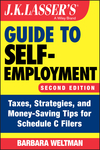More Guidance on ABLE Accounts
ABLE accounts are special savings accounts for certain disabled individuals that can be used without causing the loss of government benefits related to the disability. In 2018, the IRS indicated it would issue proposed regulations on these accounts (Notice 2018-58), and now it has done so (REG-128246-18, 10/9/19). The proposed regulations generally follow what the IRS suggested in 2018.
The beneficiary of the account or the person acting on behalf of the beneficiary is the person who is solely responsible for ensuring that contributions don’t exceed annual limits. It is this person who is solely responsible for maintaining adequate records for the account.
The usual limit is the annual gift tax exclusion (e.g., $15,000 in 2019). In addition to this, the Tax Cuts and Jobs Act permits employed or self-employed designated beneficiaries to contribute up to the lesser of the disabled person’s compensation for the year or an amount equal to the poverty line for a one-person household, provided no contribution for the beneficiary has been made for the year to a defined contribution plan, 403(b) plan, or eligible 457(b) deferred compensation plan. Contributions can also be made via rollovers from 529 plans, but no more than the amount of the gift tax exclusion each year. The designated beneficiary can certify that contributions do not exceed the new limits. The designated beneficiary must also certify that he or she has not made certain retirement plan contributions, which are not permitted by an ABLE beneficiary.
Note: If contributions exceed the limits, they must be timely returned to the beneficiary. Otherwise the excess contributions are subject to a 6% excise tax each year until returned. “Timely” means no later than the due date of the return, including extensions, for which the contributions relate.



